Energy efficiency of heating systems
In many buildings, HVAC is the first or second item in terms of energy costs. This technical article deals with optimisation tips and energy efficiency savings in heating systems of a building.

Heating systems in building
Heating systems have always been used when the outside temperature drops below a certain comfort threshold (a highly relative concept in terms of time and space). The majority of countries in Africa, South Asia and Latin America do not use heating.
The choice of the type of heating and its energy source must be made at the outset when designing a building. It falls within the competence of the specialists, architects and heating engineers.
In all cases, the search for savings involves the following actions //
- Limiting heat losses from the building
- Prevent simultaneous use of heating and air conditioning
- Avoid any improper use of heating
- Optimize the output of heat generators
- Use heat pumps
- Use solar heating
- Optimize heating circuits
- Optimize heating control
1. Limiting heat losses from the building
Depending on the level of and variation in the outside temperature, heating or cooling (air conditioning) systems maintain the inside temperature at a comfortable level (typically from 18 to 22°C). In constant operation, these systems add or remove the exact amount of heat necessary to compensate for heat losses from the building (see Figure 1 below).
The first step is to minimize these losses. To do this, it is possible to //
- Design the external walls to limit heat conduction and dissipation by radiation,
- Insulate the roof,
- Use doors and windows with heat insulation (double glazing, insulated doors),
- Treat cold bridges (door and window frames, load-bearing structures such as pillars or beams, etc.),
- Provide screens (shutters) to reduce losses through openings,
- Adapt sun-screening devices to avoid solar radiation when cooling is required.
Cheaper solutions can however be applied to existing buildings, in particular by reducing the amount of outside air which enters the building through the opening of doors and windows, or by providing an entry chamber. In all buildings, effective heating management can also produce savings described below.
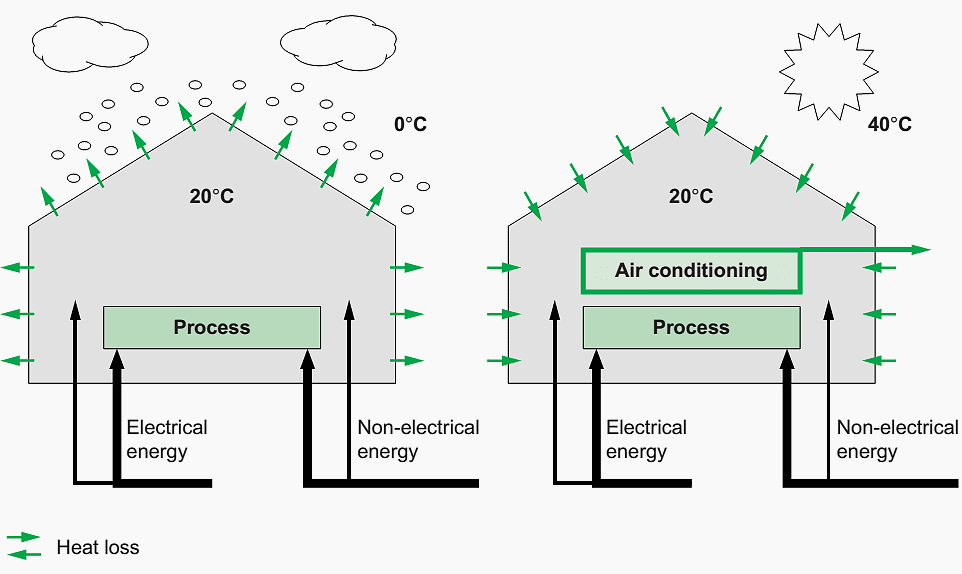

2. Prevent simultaneous use of heating and air conditioning
The most effective control systems can completely shut down part of the distribution circuit, be adjusted to prevent simultaneous operation of heating and cooling systems, and have default settings that are suitable for the building.
Implemented well, this has a negligible effect on the occupants’ comfort because the building’s thermal mass maintains a similar air temperature for short periods of time. Public holidays can also be programmed in, reducing annual running time. ‘Intelligent’ time-switches ascertain the optimal operating period, potentially reducing operating time even further.
3. Avoid any improper use of heating systems
Three tips to avoid improper use of heating systems //
Tip #1 In all buildings housing commercial, industrial or administrative activities, a temperature of 20°C to 22°C should not be exceeded during heating periods. Temperature settings are necessarily higher in hospitals and health centers, while colder ambient temperatures are possible in gymnasiums and sports halls.
Tip #2 Prevent or limit the opening of windows (both during cold spells and heat waves) or make individual heating (and cooling) systems dependent on the windows remaining closed.
Tip #3 Do not heat, or if necessary maintain just above freezing, unoccupied or partially occupied buildings (storage and service areas). For individual offices, rooms, etc., it is possible to control the operation of local heating, or the opening of air vents, by a presence detector.
4. Optimize the output of heat generators
Heating systems can be either individual or centralized.
Individual systems generally draw on electric radiators (convector, radiant or blower type) which heat each area of the building separately (offices, rooms, common areas). However, although the efficiency of an electric radiator is 100% (all of the energy used is converted into heat in the building), this type of heating is seldom the most economical.
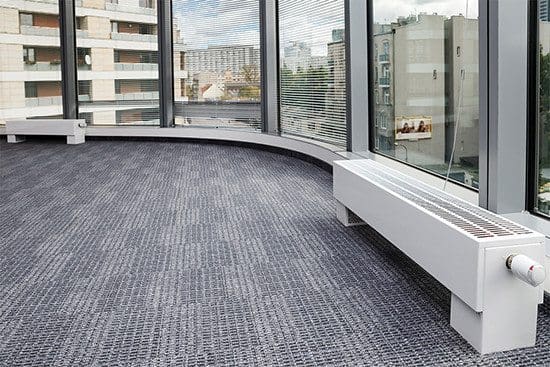

To be effective, it must be controlled so as to switch off the heating once a room is no longer in use.
Centralized systems include a heat generator (boiler) and a distribution system. When heat is purchased from a supplier, the energy is delivered via hot water pipes and thermal metering is used for billing purposes. In other cases, thermal energy is generated in a boiler located in the building. To be fully efficient, a boiler must be of recent design and adjusted and maintained by qualified personnel.
Its efficiency can be measured, regardless of the type of fuel, by monitoring the level of CO2 and the temperature of the exhaust gases.
5. Use heat pumps
Heat pumps can be used alone or in combination with a boiler, with the type used depending on the heat source.
The heat source may be the surrounding air, but in this case the pump cannot be used effectively below a certain temperature, because of icing. “Air-water” or “air-air” heat pumps are thus most frequently used in mid-season, with the boiler taking over during the coldest periods.
The heat source may also be subterranean water, where available (see figure 2 below), or the subsoil. The heat pumps are in this case of the “water-water” type and have a much greater range of use, as they are not limited by the outside temperature.
Note // The efficiency of a heat pump is measured by its coefficient of performance (COP), which is the ratio of the thermal energy delivered under specified temperature conditions to the electrical energy consumed by the compressor (and possibly the fan).
The COP of an “air-water” heat pump is 2 to 3.5 depending on the air temperature. A “water- water” heat pump can achieve a COP of 3 to 5.
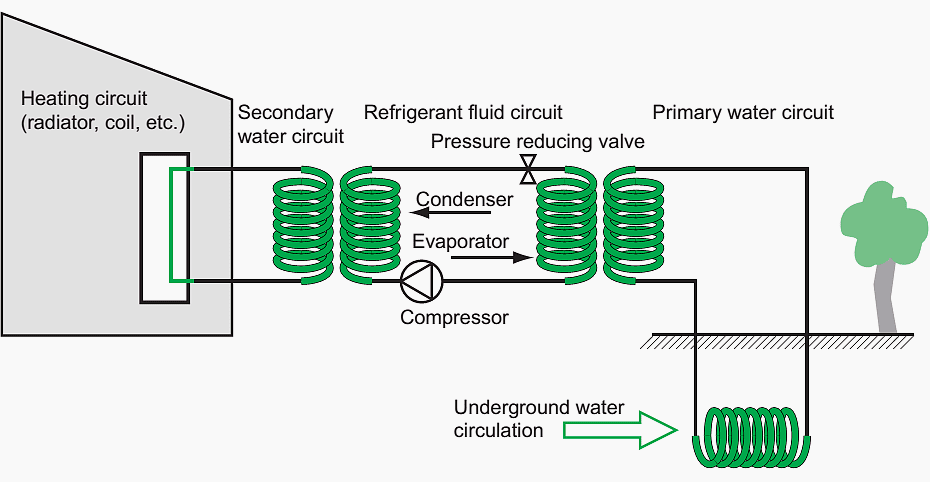

6. Use solar heating
This solution presents two difficulties: it requires good exposure (orientation) for the installation of the solar panels, and the availability of heat is by its very nature subject to variations in the weather. It can only be used as a supplement to heating systems.


7. Optimize heating circuits
In the case of a centralized heating system where thermal energy is distributed to various buildings via a water or air circuit, it is also advisable to save energy by reducing heat loss along the pipes. It is essential to insulate water pipes or air flues, especially in unheated areas (ducting, boiler rooms, service areas).
The electricity consumption of pumps or fans must also be reduced by fitting variable speed drives to provide a level of propulsion which exactly meets the requirement.
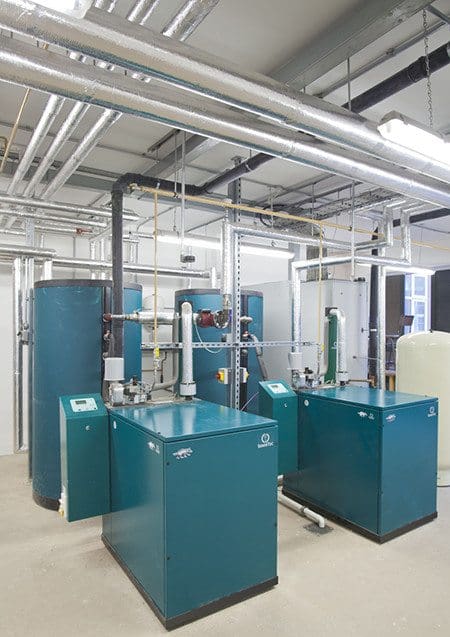

8. Optimize heating control
The heating control system must ensure the user comfort at minimal energy consumption as shown in figure 3 below.
In normal operation, all of the premises which are actually used must be at a comfortable temperature. For periods when the buildings are not being used (nights, weekends, holidays) the temperature can be lowered by several degrees.
A minimum temperature just above freezing must be permanently maintained to avoid damage to buildings and their contents.
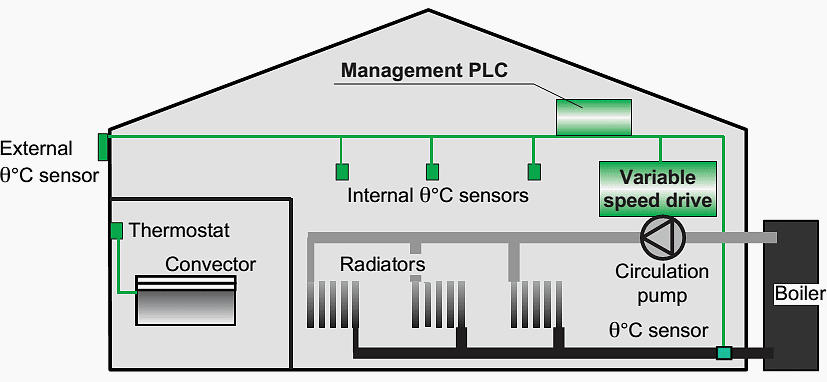

Such optimization requires programming which must take account of //
The thermal inertia of the building. The heating must therefore come on a few hours before the occupants arrive, and it may similarly be switched off before they leave. It is highly worthwhile to fine-tune these periods, even with a temporary slight drop in the level of comfort.
The occupation of premises where it is possible to regulate the temperature of various parts of the building independently, thus avoiding heating unused rooms or rooms which are only used intermittently.
The external climate (outside temperature, wind, sunlight) in order to estimate the heat loss from the building.
The “free contributions” provided by solar radiation, the metabolism of those present (approximately 75 W/person), as well as heat generated by processes (for example cooking) and interior lighting. These free contributions are taken into account by the internal thermostats.
Finally, to improve user comfort, it is desirable to be able to adjust the temperature setting for each office individually. Adjustment is by means of either a thermostatic valve controlling a water-filled radiator or a shutter controlling the air flow.
HVAC Optimization Webinar
References //
- Cahier Technique Schneider Electric no. 206 – Energy savings in buildings by N. Chaumier
- Technology Background – Heating, ventiliation and air conditioning – http://eex.gov.au




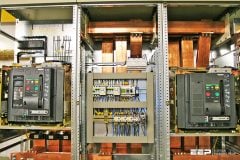



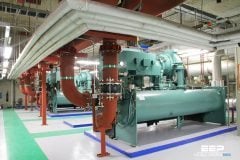


All the information that you shared with us is very useful for us. Keep sharing…
I am confused. This is a jolly good intro for the layman so why is it on the IET site?
These solutions are almost mandatory all over Europe, not just “best practices”.
As an example, in Italy there are “Buildings efficiency classes” (from A, very good, to G not applicable): class A is already mandatory in some Regions, while “0 energy” buildings are a viable solution (it means that the building doesn’t require any fuel or electric energy)